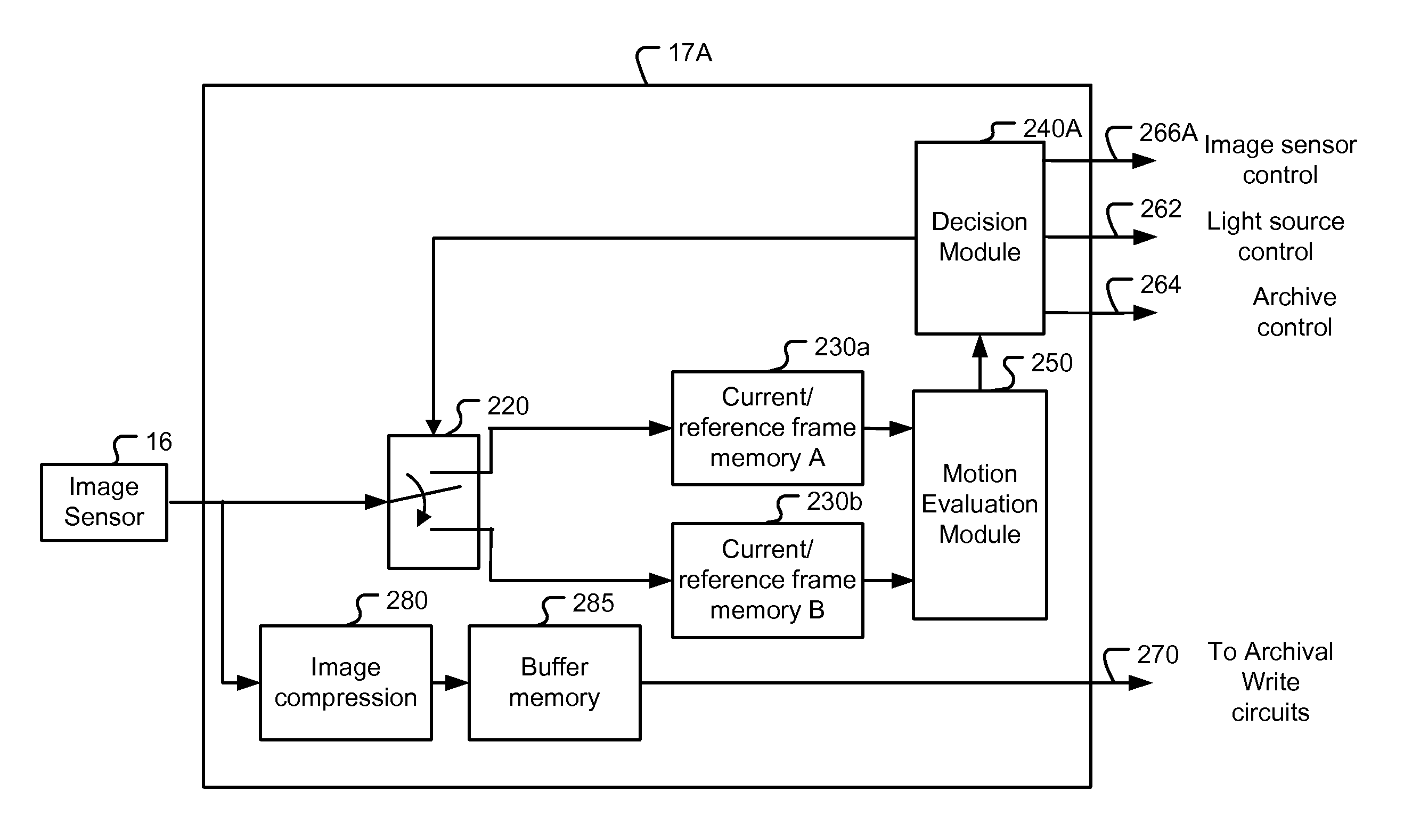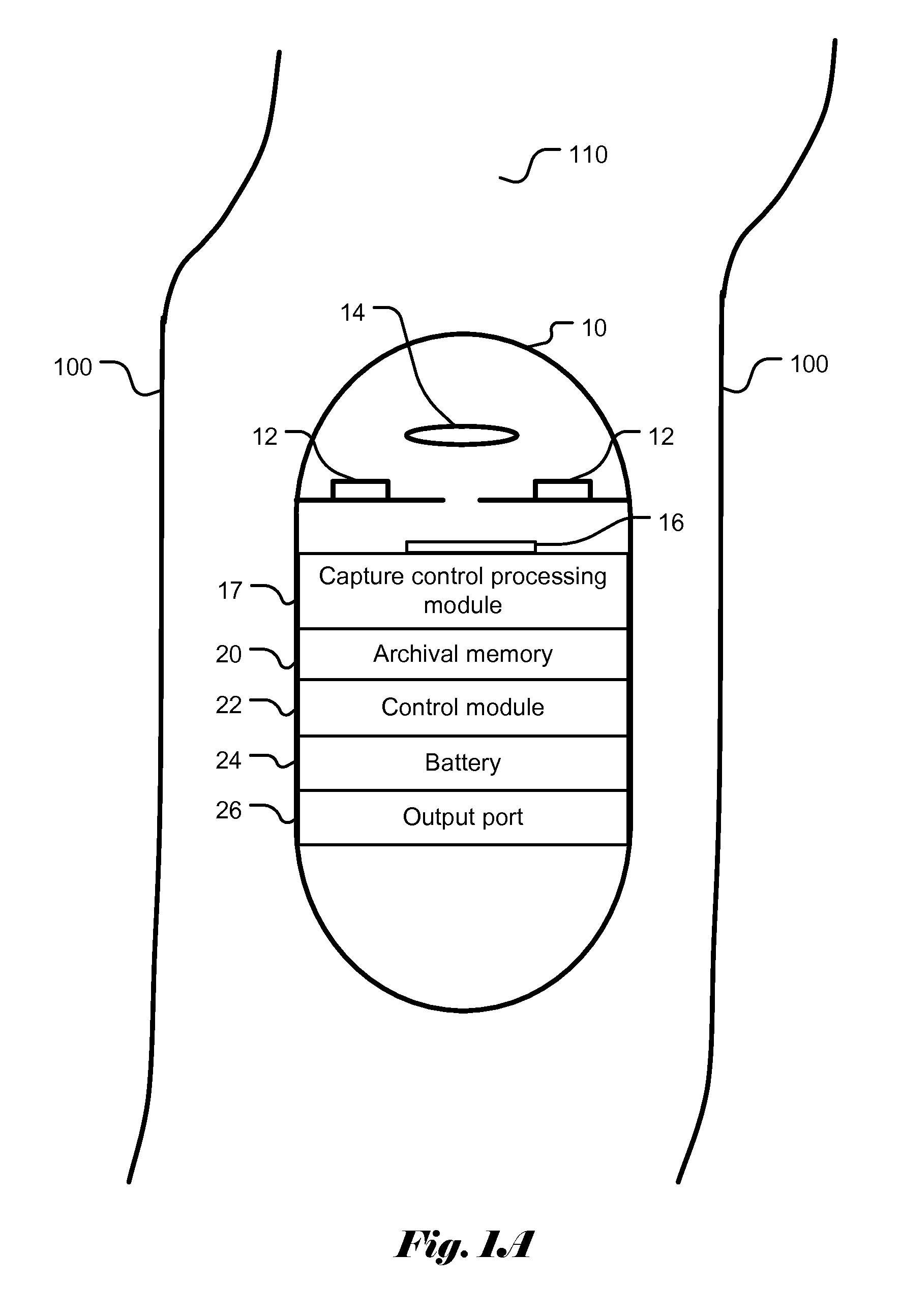Capture control for in vivo camera
a technology of in vivo camera and control panel, which is applied in the field of diagnostic imaging, can solve the problems of inability to reach endoscopes, patient risks, and cost restrictions, and achieve the effects of reducing the image size for motion metric evaluation, reducing the luminous energy of light sources, and reducing the luminous energy
- Summary
- Abstract
- Description
- Claims
- Application Information
AI Technical Summary
Benefits of technology
Problems solved by technology
Method used
Image
Examples
Embodiment Construction
[0030]Semiconductor memories are low-cost, low-power, easily available from multiple sources, and compatible with application specific integrated circuit (ASIC) and sensor electronics (i.e., the data sources), and a personal computer (i.e., the data destination) without format conversion devices. One embodiment of the present invention allows images to be stored in an “on-board storage” using semiconductor memories. To enable storing a large number of diagnostic images in such areas as the colon, a method according to one embodiment evaluates motion metric between two frames. If the motion between the two frames is large enough, the image data is captured in higher quality by using a higher resolution and / or a larger picture size. Furthermore, the luminous energy of light source can also be used to control the storage size when an image compression method is used. In a typical image compression system, lower luminous energy will reduce the dynamic range of the captured image and con...
PUM
 Login to View More
Login to View More Abstract
Description
Claims
Application Information
 Login to View More
Login to View More - R&D
- Intellectual Property
- Life Sciences
- Materials
- Tech Scout
- Unparalleled Data Quality
- Higher Quality Content
- 60% Fewer Hallucinations
Browse by: Latest US Patents, China's latest patents, Technical Efficacy Thesaurus, Application Domain, Technology Topic, Popular Technical Reports.
© 2025 PatSnap. All rights reserved.Legal|Privacy policy|Modern Slavery Act Transparency Statement|Sitemap|About US| Contact US: help@patsnap.com



